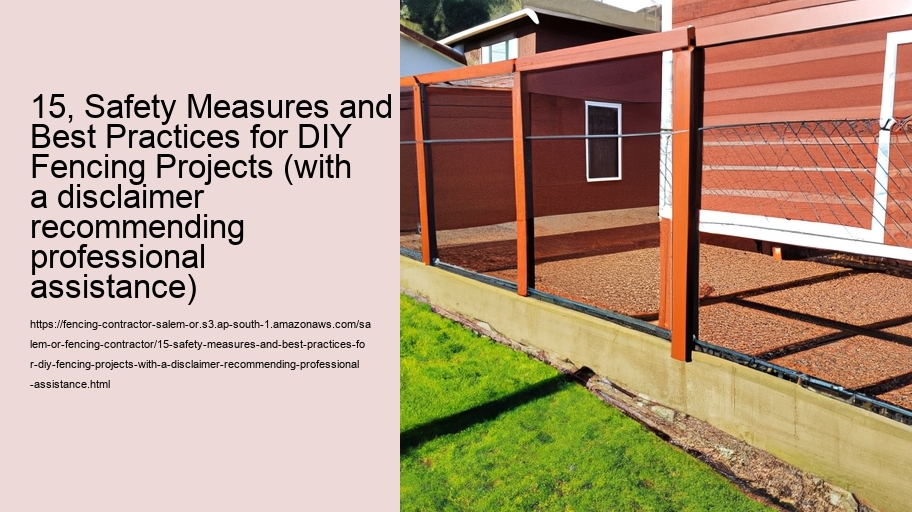When embarking on a DIY fencing project, it is critical to prioritize safety and adhere to best practices to ensure that the process is smooth, effective, and free from unnecessary risks. Cost Vs. Value: Investing in Quality Fencing for Your Property . While undertaking such a project can be rewarding and cost-effective, it's important to acknowledge that professional assistance is often invaluable due to the complex nature of fencing installations. The following guidelines serve as a roadmap for those opting to take on this task themselves but come with the strong recommendation that professional help be sought whenever in doubt.
1. Plan Thoroughly: Before breaking ground, have a clear plan in place. This includes identifying property lines, choosing the right type of fence for your needs, and obtaining any necessary permits. Contact local utility companies to mark underground lines so you don’t accidentally hit them during installation.
2. Choose Quality Materials: Invest in high-quality materials that are appropriate for your climate and soil type. Weather-resistant woods or metals can prevent future issues like rotting or rusting.
3. Use Proper Tools: Ensure you have all the necessary tools before starting your project. Common fencing tools include post-hole diggers, hammers, saws, levels, and drills. Using inappropriate tools can lead to injury or an improperly installed fence.
4. Wear Protective Gear: Always wear protective equipment such as gloves, goggles, ear protection (when using loud machinery), and sturdy boots when working on your fencing project.
5. Follow Manufacturer Instructions: Whether it’s for installing fence panels or mixing concrete for posts, adhering strictly to manufacturer instructions reduces the risk of mistakes that could compromise safety or fence integrity.
6. Check Local Regulations: Adhere to local building codes which may dictate the height of your fence or its distance from property lines and sidewalks.
7th Measure Twice Cut Once Good measurement is key in ensuring that components fit correctly together without needing excessive force which might cause injury
8 Install Posts Correctly Post installation is crucial A solid foundation prevents leaning sagging Ensure posts are set at consistent intervals deep enough into ground
9 Secure The Fence Properly Make sure all parts are securely fastened avoid loose elements which could become hazardous
10 Take Your Time Rushing leads errors accidents Pace yourself allow ample time complete each step properly
11 Be Mindful Of Terrain Uneven ground poses tripping hazards account slopes curves layout accordingly
12 Maintain Good Ergonomics Practice lifting techniques prevent back strain Keep frequently used items within easy reach minimize repetitive motions
13 Stay Hydrated Working outdoors especially under sun can quickly lead dehydration drink plenty water throughout day stay alert focused
14 Know Your Limits Recognize when job beyond skills complexity electrical work should be left professionals risking personal harm liability issues
15 Have An Emergency Plan In case accident happens have first-aid kit handy know how contact emergency services quickly effectively
In summary while it is certainly possible complete successful DIY fencing project essential remember importance safety precision these guidelines designed offer general advice however every situation unique individual skill levels vary greatly Therefore always consider consulting hiring professional ensure highest level satisfaction safety Remember no shortcut worth risking personal health wellbeing
Disclaimer Please note this information intended guide not substitute expertise qualified contractor Undertaking DIY projects involves certain risks responsibility take caution appropriate measures seek professional guidance necessary
